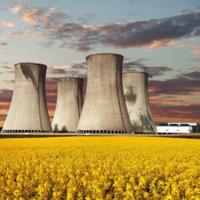The global demand by tech cloud vendors for commercially owned and operated artificial intelligence data centers has accelerated in recent years and, according to a report by Dell’Oro Group, global data center capacity surged 51 percent to $455 billion in 2024, with a projected rise of more than 30 percent in 2025.
One significant indicator of this surging AI data center demand is measured by forecasts for future electrical power consumption, which directly reflects the number of servers an AI data center can effectively operate.
The projected rapid deployment of AI technologies, and specifically, the expansion of generative AI tools, requires increasingly more electrical power to meet future U.S. consumer demand. Providing the more than 50 gigawatts of additional data center capacity needed in the United States by the end of this decade would require an investment of more than $500 billion in data center infrastructure alone.
Forecasts vary regarding electrical energy demand for AI data centers, but all are expected to increase significantly over the next five to 10 years.
In its December 2024 report, Grid Strategies, an energy consulting firm, forecast U.S. electricity demand would increase by 15.8 percent by 2029, primarily driven by growth in data centers that would require 65 GW of power. Electric utility forecasts project growth for AI data centers up to 90 GW of power. AI is estimated to account for 70 percent of the 176 GW in data center electrical power demand expected by 2035, according to a Deloitte analysis.
As a result of AI, technology-based electrical power and capacity demands (along with the tech industry’s sustainability challenges), the U.S. tech industry is projected to invest $1 trillion in data center capacity through 2028, with this expansion expected to double or triple the amount of energy consumed by these data centers.
To meet this burgeoning U.S. electrical demand, several utilities have fast-tracked proposals for new natural gas power plants, while others are evaluating small modular nuclear reactors as potential solutions for delivering steady, low-carbon baseload power, thus ensuring they have a reliable electrical power source.
Many AI data centers are creating microgrids that use local renewable energy, battery storage, and backup power sources, keeping energy sources stable. Google, Microsoft and Amazon are building wind and solar farms to power their data centers, helping cut energy costs and carbon emissions. Google is also making longer-term investments in emerging clean technology, such as enhanced geothermal. Taken together, this represents an “all-of-the-above” usage in the tech industry approach to energy source
However, Google has decided to expand its AI data center horizons beyond the established sources of energy, and invest in what may be the next frontier of energy source innovation — nuclear fusion energy.
In June, Google announced that it will buy 200 megawatts of power from Commonwealth Fusion Systems, a Massachusetts company that spun off from MIT in 2018 (and which Google first invested in 2021 and plans on increasing its financial stake in the company), in what it calls the “first direct power purchase agreement in history” between a customer and a nuclear fusion company. CFS announced that it expects to deliver power to the electrical grid “in the early 2030s” from a fusion power facility planned for construction in Chesterfield County, Virginia, which is not far from the “data center alley” of northern Virginia, the world’s largest concentration of data centers.
In 2023, Microsoft signed a power purchase agreement with Helion Energy for 50 MW of nuclear fusion energy, including a commitment to start producing commercial energy by 2028, which would be provided through Constellation Energy as the power marketer.
Nuclear fusion energy involves melding hydrogen atoms (and producing limitless energy with virtually no waste by-product), versus nuclear fission, which splits uranium atoms (and results in long-lived nuclear waste). However, no company has been able to create more viable, cost-effective power than it consumes.
For Google and Microsoft, these investments are part of a strategic options approach to develop as many sources of energy as possible, given the staggering forecast demand for energy over the next decade.
This “bet” on creating commercially viable nuclear fusion energy is an investment by Google and Microsoft in expanding — albeit with a higher risk factor — the “all-of-the-above” energy approach that the tech industry has embraced.

